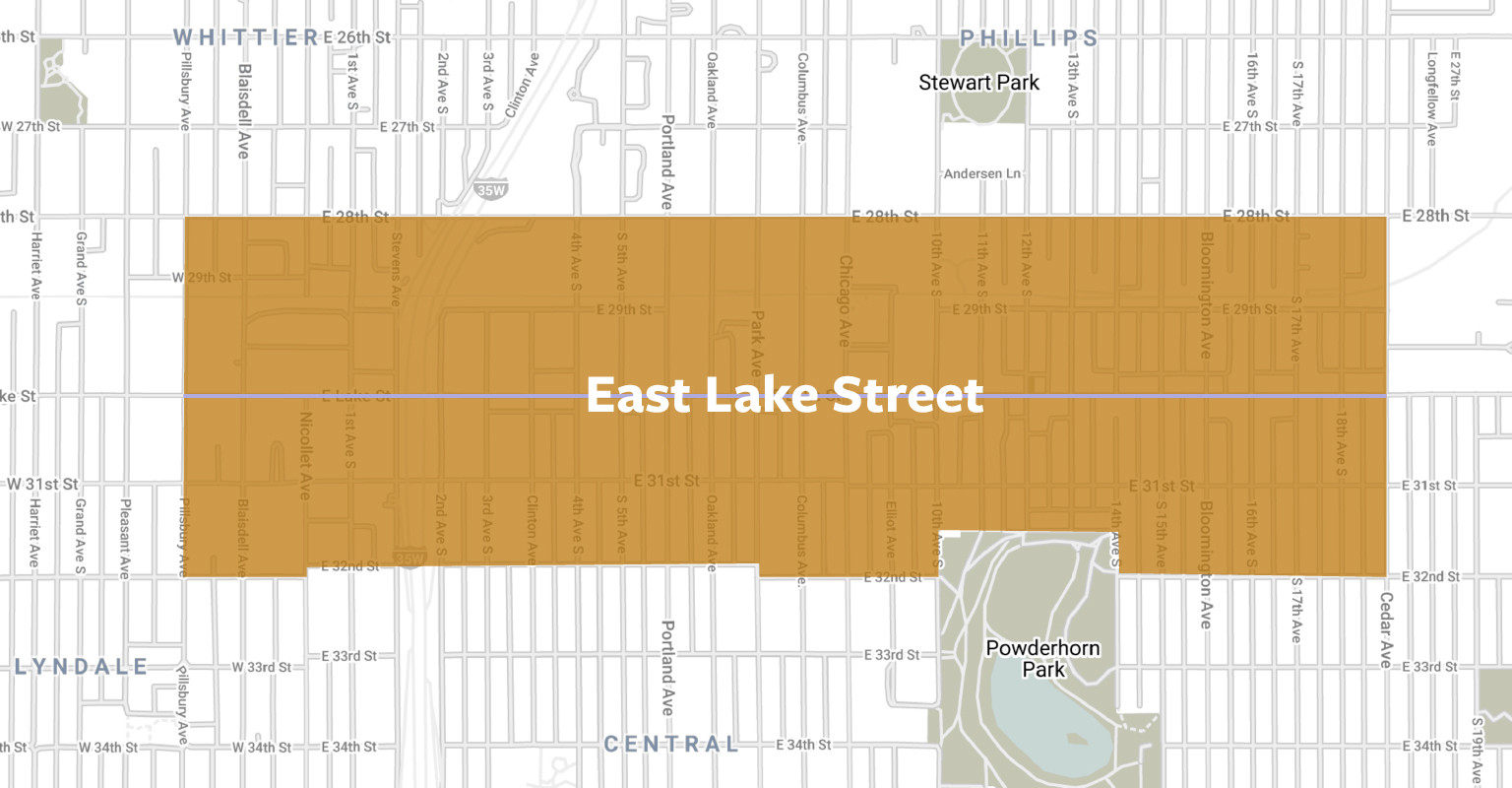 East Lake Street Scene
East Lake Street Scene
Though not originally from Minneapolis, East Lake Street has always resonated with a sense of home for me. Moving to the Twin Cities in 2010 marked the beginning of a decade deeply connected to this iconic street. While my initial three months were spent in Northeast, Lake Street became my intentional destination, never more than a mile away for the next ten years. My move from Wisconsin was fueled by a love for the city’s bike paths, the easy access to verdant parks, and the unique ability to find urban escapes within the city itself. East Lake Street, regardless of whether I was biking, busing, driving, or walking, perfectly exemplified how much exploration could be packed into a relatively small area.
As a queer person of color with Mexican heritage, the East Lake Street district offered a comforting familiarity during a period of significant adjustment to a new city. The paleterias, carnecerias, and panaderias that dot East Lake Street evoked nostalgic scenes from my life in Milwaukee over a decade prior. The area pulsates with life – from puppet shows and museums to lively dance parties and welcoming queer communities, all underpinned by incredible food. East Lake Street has witnessed significant historical moments, especially in the aftermath of George Floyd’s tragic death. Yet, the community’s spirit remains strong, continually fostering an environment where immigrants not only find a foothold but truly flourish. Today, the district is a vibrant tapestry of Latine and East African cultures, a rich blend that reflects its evolving history.
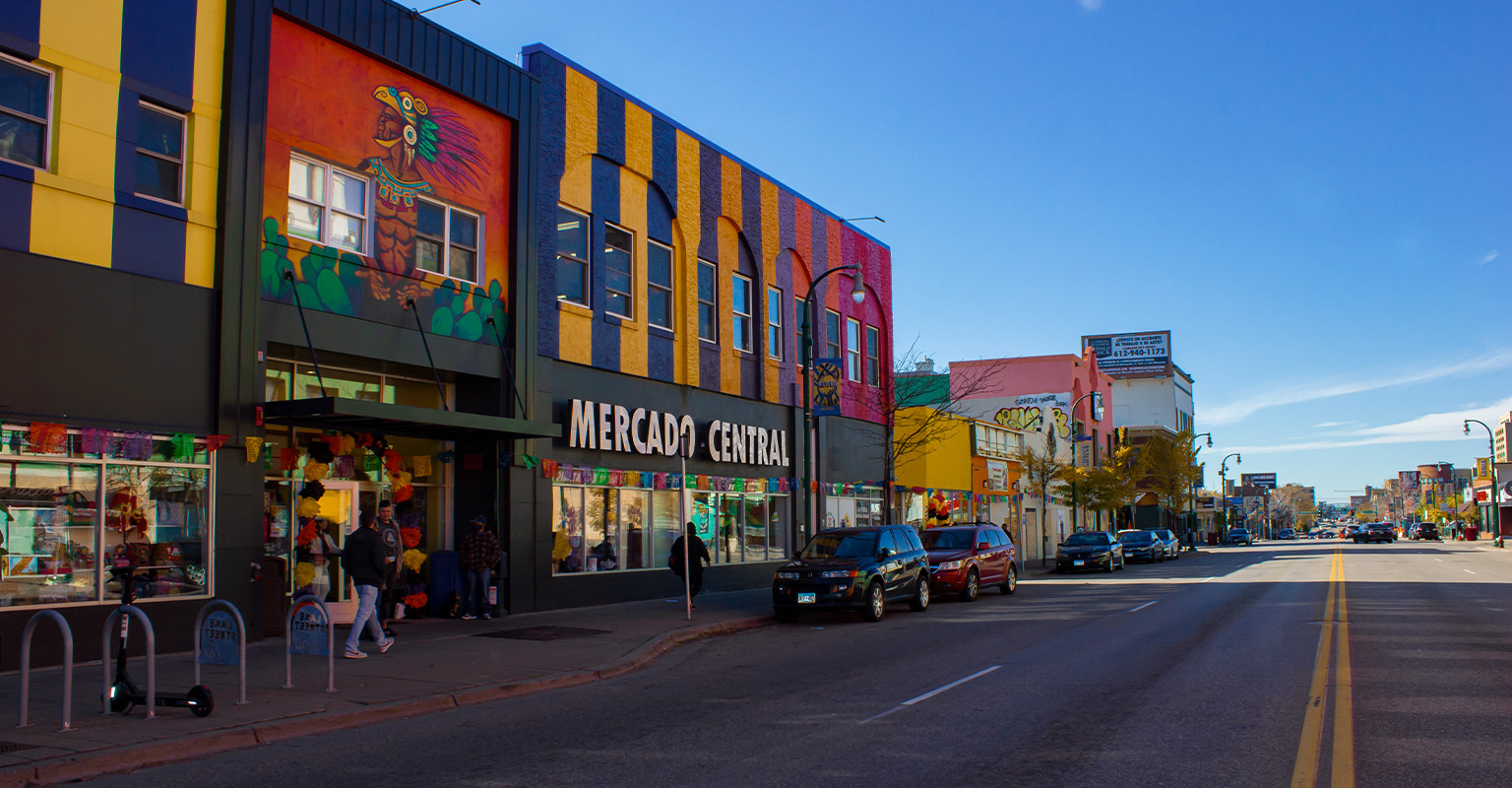 Mercado Central Interior
Mercado Central Interior
A Journey Through Time: The History of East Lake Street
Minneapolis experienced rapid growth at the dawn of the 20th century, drawing Scandinavian immigrants seeking work and new opportunities. These newcomers established themselves in neighborhoods around Lake Street, contributing to the city’s burgeoning prosperity. Lake Street initially served as a primary route for bicycles and buggies, catering to those venturing out to explore the natural beauty of the region, with Minnehaha Falls as a popular destination to the southeast. The introduction of a streetcar system in the 1880s further fueled development, bringing workers from areas as far as Excelsior. By 1928, the grand Sears-Roebuck store, now the Midtown Exchange building, opened at the corner of Chicago Avenue and Lake Street, becoming a major shopping destination. The landscape of Lake Street shifted dramatically in the 1950s with the removal of the streetcars and the widening of the road. It transitioned into a car-centric thoroughfare, popular among cruising adults and teenagers.
Until the late 1960s, small businesses thrived along Lake Street. However, the construction of Highway 35W without a direct Lake Street exit significantly impacted the area. This lack of accessibility led to business closures and vacancies along sections of East Lake Street. The Sears-Roebuck store eventually closed, crime rates increased, and the area experienced white flight. Consequently, the demographic makeup of Lake Street began to transform.
In a parallel to the area’s earlier history, Latine immigrants seeking affordable housing and business spaces began to arrive, injecting new life into the area. They established neighborhood anchors like Mercado Central, a bustling Latine marketplace that today houses 35 businesses, including butcher shops, tortillerias, bakeries, beauty salons, and real estate services. These industrious immigrants mirrored the waves of newcomers from the 1880s. By the early 2000s, the former Sears building was undergoing a remarkable revitalization. The neighborhood had become home to significant Latine and, increasingly, East African immigrant communities. Local Latine and African development centers collaborated with cultural organizations, city authorities, and developers to reimagine the old Sears building as a global marketplace, incorporating office spaces and apartments. This collaborative effort spurred positive change in the surrounding neighborhood. Crime rates declined, employment rates rose, and further development attracted a wave of small businesses led by Black and Brown entrepreneurs along East Lake Street. This was the vibrant and evolving East Lake Street I encountered when I made Minneapolis my home in 2010.
 Zahra Fashion Storefront
Zahra Fashion Storefront
Crafting a Perfect Morning on East Lake Street
While a single day barely scratches the surface of this dynamic cultural district, let me suggest an ideal itinerary for experiencing East Lake Street.
Being an early riser, I find immense joy in starting the day with a bike ride or run. The Midtown Greenway offers a perfect beginning. This 5.5-mile cyclist haven, meticulously plowed throughout winter, follows a former railroad corridor, providing convenient access points to Lake Street’s diverse shopping, dining, and entertainment options. I consider the Greenway one of the safest routes for cycling, regardless of the time of day. It also seamlessly connects to the Minneapolis Chain of Lakes and the extensive 50-mile Grand Rounds Scenic Byway for those seeking longer excursions. After your invigorating ride, it’s best to explore East Lake Street on foot, allowing you to discover hidden gems like tiny bakeries, authentic taco stands, or inviting Somali cafes.
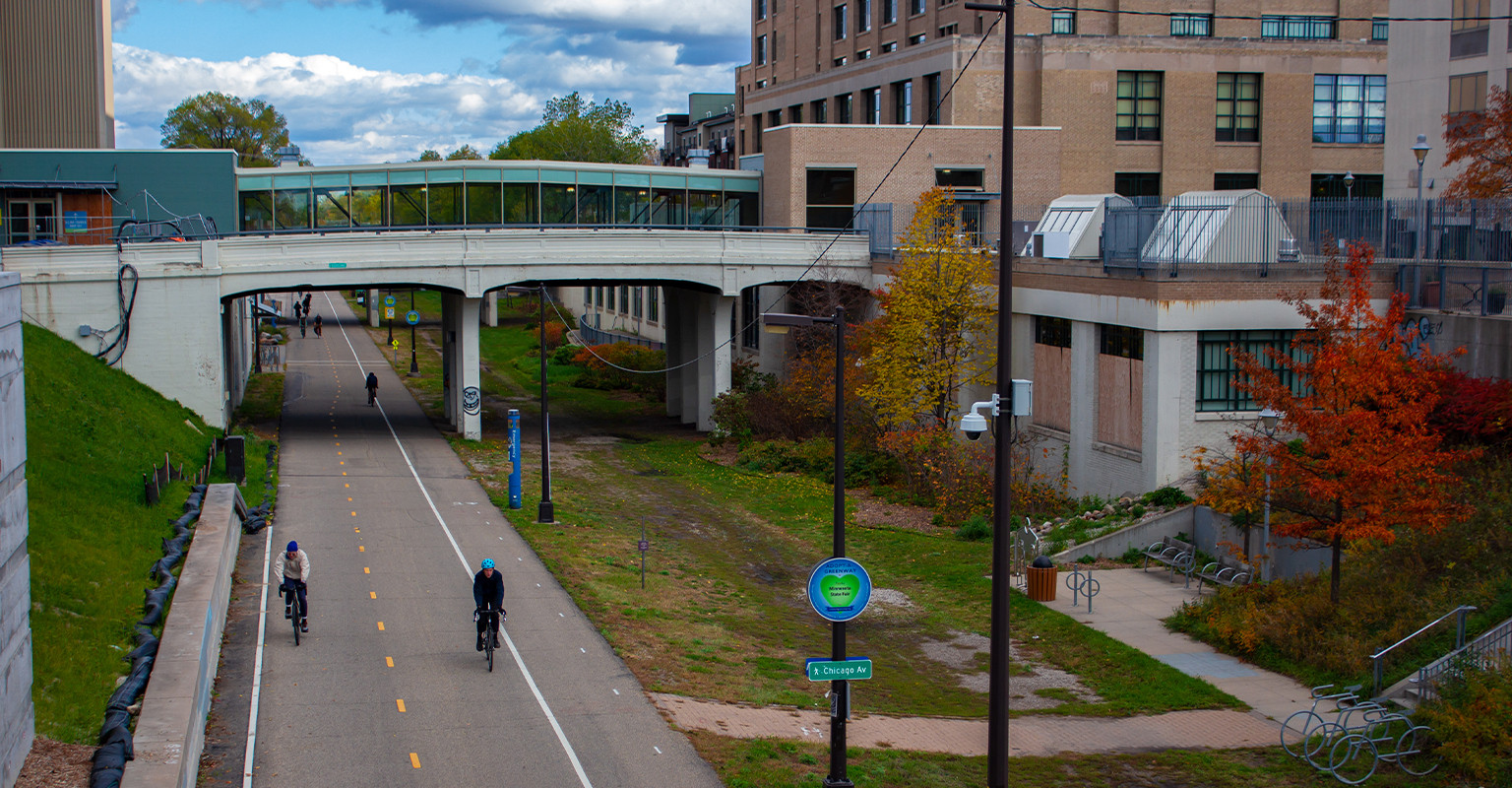 Cyclists on Midtown Greenway
Cyclists on Midtown Greenway
A Culinary Exploration
After working up an appetite, Panaderia el Mexicano in Mercado Central is a must-stop for a delightful, fluffy concha and your first coffee of the day. For those planning ahead, consider picking up some premium cuts of meat from Valerie’s Carniceria within Mercado Central – their arracheras (thinly sliced, flavorful skirt steak) are a personal favorite for summer grilling. If you’re in the mood for a more substantial breakfast, Midtown Global Market is just a short distance away, home to Andy’s Diner. Andy’s offers freshly prepared omelets, savory chilaquiles, or classic biscuits and gravy. Later in the day, their burgers and shakes are equally tempting. While you could easily spend an entire day indulging in the global flavors of Midtown Global Market, East Lake Street offers even more cultural and culinary adventures.
As a food writer by profession, I’m always on the lookout for the next delicious bite, even off-duty. East Lake Street is a paradise for food enthusiasts like myself. For a refreshing treat on a warm day, La Michoacana Purepecha on Lake and Park is the place to go for a mangonada or paleta. My personal recommendation is the bubblegum-pink piñon (pine nut) flavor – creamy, rich, and perfectly sweet without being overly sugary. For dinner, immerse yourself in Somali cuisine at Quruxlow. Renowned for their exquisitely spiced sambusas and generous plates of flavorful seasoned rice topped with various meats and stews, Quruxlow provides a truly authentic dining experience.
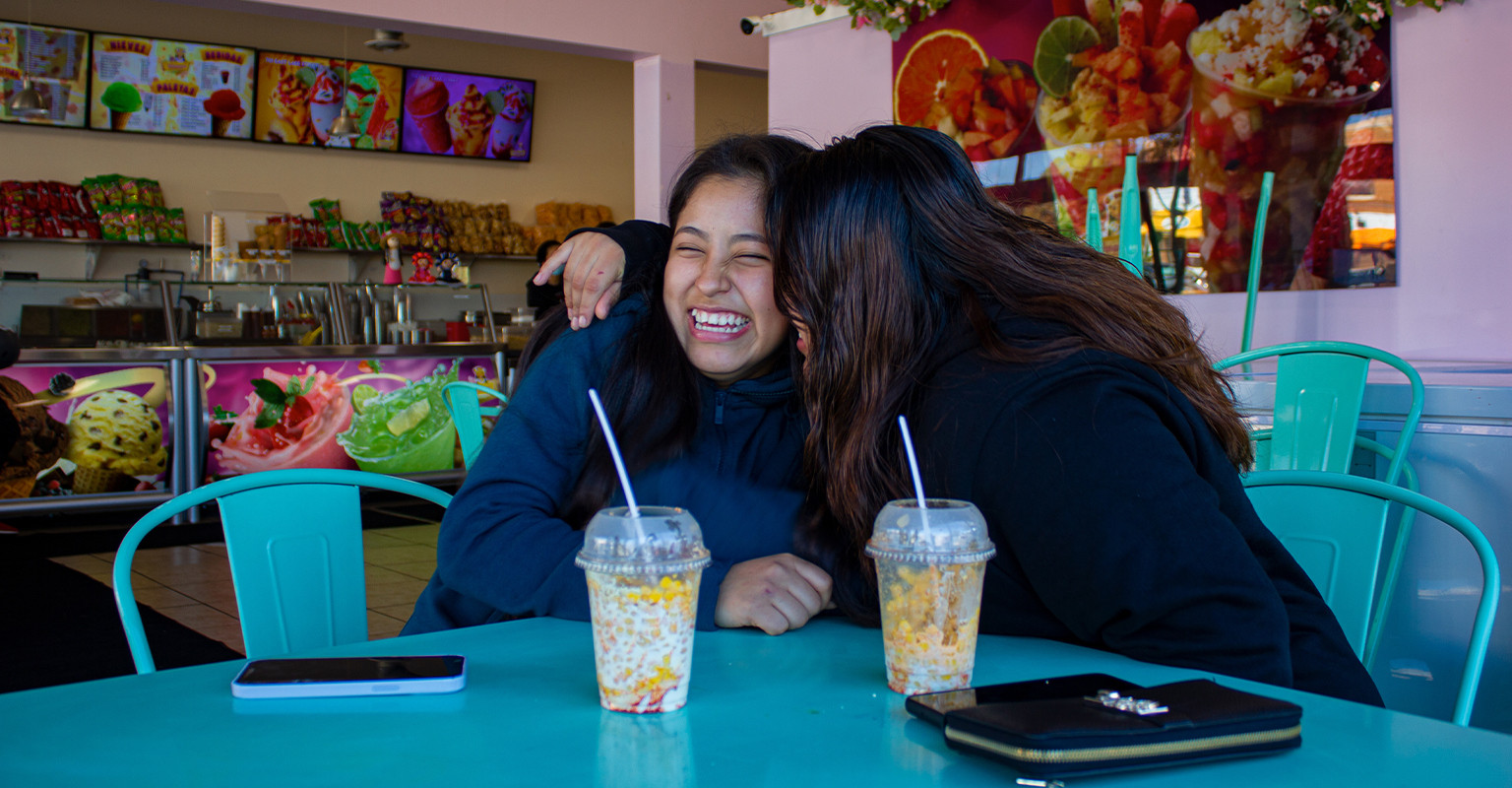 La Michoacana Purepecha Ice Cream Shop
La Michoacana Purepecha Ice Cream Shop
Immerse Yourself in Culture
To delve deeper into the history and culture of Minneapolis’ Somali community, visit the Somali Museum of Minnesota. This unique museum offers insights into the largest immigrant and refugee population from Somalia residing in the Twin Cities. To explore the heritage of some of East Lake Street’s earliest immigrants, visit Ingebretsen’s on 16th and Lake, a beloved institution celebrating its 100th year on Lake Street. Here, you’ll discover Nordic gifts and deli items. Their beef jerky remains a personal favorite and is ideal for packing on long bike rides.
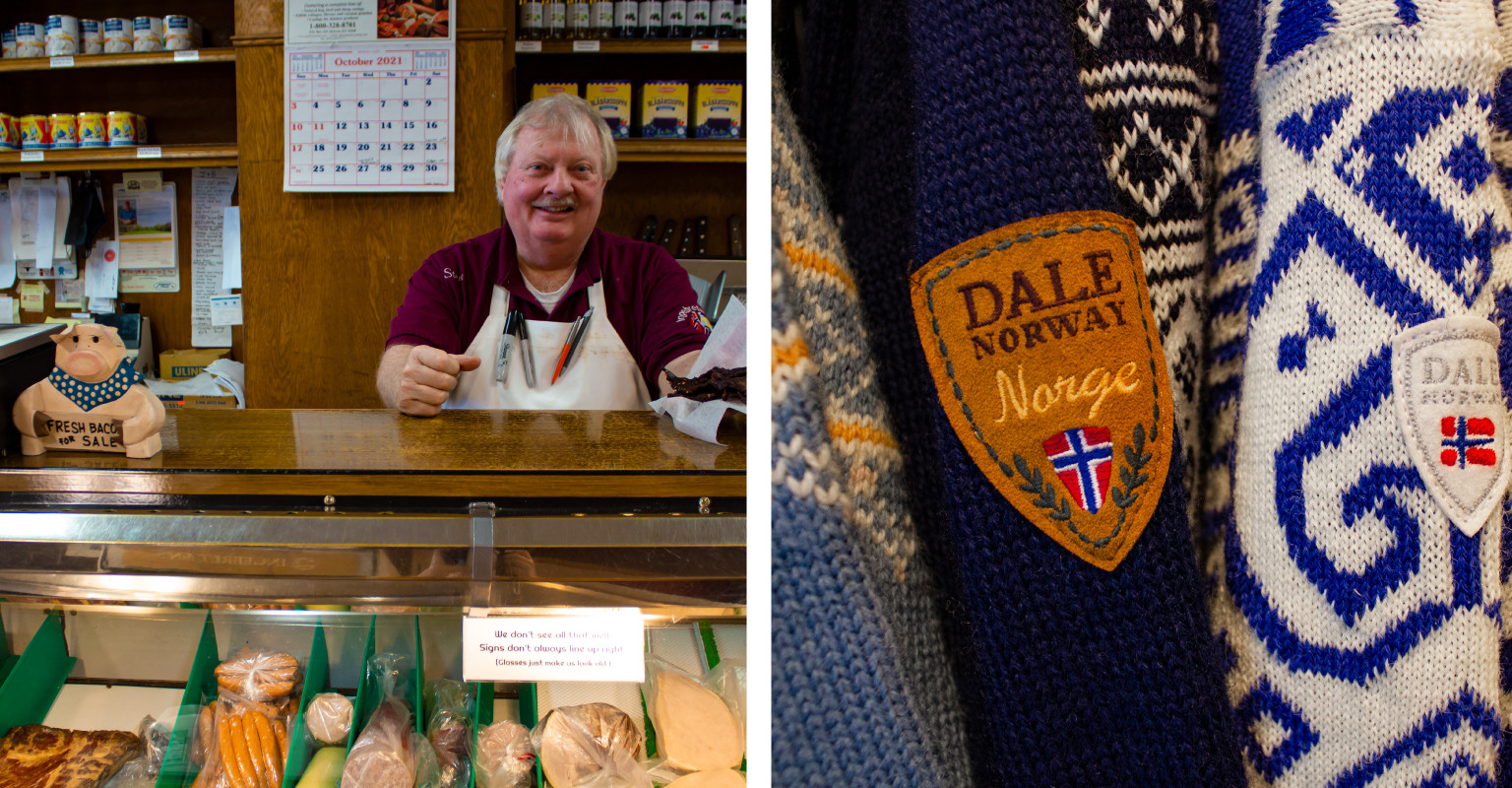 Ingebretsen's Scandinavian Gifts and Food
Ingebretsen's Scandinavian Gifts and Food
As you stroll along East Lake Street, take time to admire the vibrant murals adorning the buildings. Local artists have been enhancing this area for years, expressing neighborhood pride through their art. Following the events of 2020, many more artistic expressions of community solidarity emerged on building facades. A self-guided mural tour is a fantastic, free, and immersive way to spend an afternoon.
The former Robert’s Shoes lot at Chicago and Lake has transformed into a hub for community events. The Lake Street Truth Collective, a community organization, hosts queer BIPOC dance parties and comedy shows here. Xochi de la Luna, a multi-disciplinary artist, producer, curator, and organizer with the collective, describes this corner in the heart of East Lake Street as a space for healing and community repair since the 2020 uprising. As the plywood boards came down, they are actively working to welcome people back to East Lake Street with music, dance, and an environment that celebrates Black and Brown joy. Last summer, I joined in the festivities, enjoying a drag show and dancing the night away at their Pachanga event – every moment was filled with joy.
 Poet Isabel Lopez Performing
Poet Isabel Lopez Performing
My time spent near East Lake Street has taught me that a visit here leaves you feeling enriched in body, mind, and spirit. This resilient district has paved the way for prosperity for countless newcomers. Its legacy continues through the independent, immigrant-owned businesses that deserve every visitor’s attention and support. One visit is simply not enough to fully appreciate East Lake Street; it takes exploration and time to create your own cherished memories and favorite spots within this vibrant hub of food, culture, and community, just like the treasured experiences I hold dear today.

